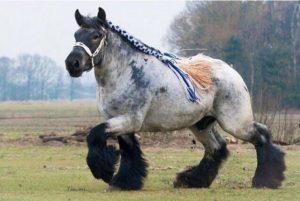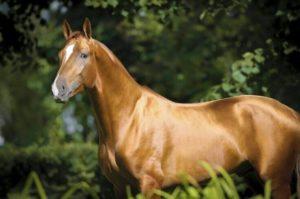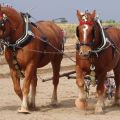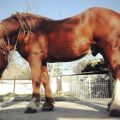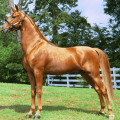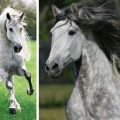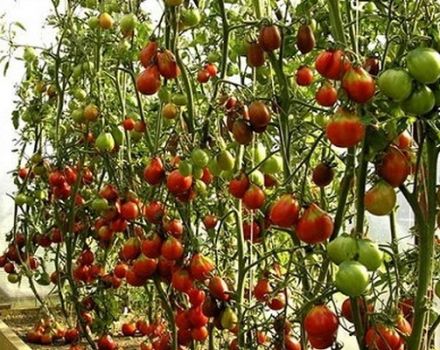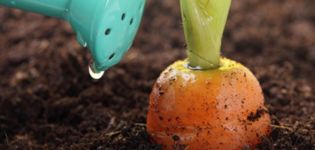Types of horse crossings and basic rules
Breeding unique breeds of horses has long been considered a worthy pursuit. Crossbreeding different horse breeds gave breeders the opportunity to create unique animals. Painstaking work continues today - real specialists are not used to resting on their laurels. The results of their activities are not visible to the general public, but true connoisseurs of horses pay tribute to the masters of their craft.
What is horse crossbreeding
Horse crossing is the mating of representatives of different breeds to improve some qualities.... As a result of manipulations, more hardy animals with good heredity are obtained. According to the observations of scientists, descendants acquire hereditary characteristics of the parents most adapted to the surrounding conditions. Rational use of this feature allows you to achieve offspring endowed with the desired qualities.
Such hybrids have a heterosis effect. The term means the presence of useful acquired qualities in foals. Thus, unsightly, undersized horses are improved. Small horses are often found on farms. In order to correct the shortcomings, animals are crossed with representatives of factory breeds.
The resulting offspring are provided with quality nutrition and good living conditions. Only if these conditions are met can one hope for the success of the event.
A dismissive attitude to recommendations can lead to unexpected results: the desired qualities will not appear in foals, but the existing advantages will be completely lost. Thus, the "improved" horse will be much worse than the local, "not improved" animals.

Crossing types
There are 5 types of horse crossing. The choice of method depends on the purpose of the important event.
- Absorbing view. Crossbreeding is used when it is necessary to radically change some of the qualities of the breed. In some cases, the scavenging method is used to develop a new branch based on an existing horse breed. Crossbreeding is carried out with the participation of stallions of the improving breed.
- Reproductive look. This complex type of cross is used to breed a new breed. To obtain the result, horses of 2 or more breeds are mated. Depending on the number of breeds used, reproductive crossing is called simple or complex. This winding path led to the emergence of magnificent horse breeds - the Budyonnovskaya horse and the Oryol trotter.
- Introductory view. A common crossbreeding procedure designed to improve the original qualities of an animal by adding fresh blood. Thus, the individual qualities of the horse are improved.There are no major changes. Such manipulations are carried out in a planned manner in the work with representatives of half-bred breeds (Trakehner, Budennov, Russian riding).
- Industrial look. Crossing is carried out in rare cases. The procedure is not intended for breeding horses. Crossbreeds are endowed with athletic or productive qualities. For crossing, both representatives of local breeds and imported stallions of trotting and heavy draft types are used.
- Variable view. Used to breed versatile animals. The procedure is carried out with the alternating use of 2-3 breeds of stallions.

In some cases, many more representatives of different breeds are used. The resulting hybrids receive new qualities and may well surpass their ancestors in terms of endurance, growth and productivity.
Basic rules for conducting
Horses are prepared in advance for the mating period. The stallions-producers are transferred to the regime of enhanced nutrition. Sprouted oats or carrots must be added to the daily diet. For older stallions, animal supplements are needed, in the form of chicken eggs or skim milk. If possible, it is recommended to pamper the horses with a yellow millet dessert.
In general, the amount of feed consumed is significantly increased, and concentrated feed should be at least 60% of the total mass. Stallions must be provided with physical activity in the form of daily exercise. Before mating, the stallion must be uncoated. No special preparation is required for mares.
During the preparatory period, horses are fed a succulent, roughage with a minimum of concentrate. Healthy, large mares are allowed to cross. Individuals under 3 years old are not allowed to mate. The procedure is carried out during estrus (hunting). The duration of the period for possible mating is from 3 to 7 days.
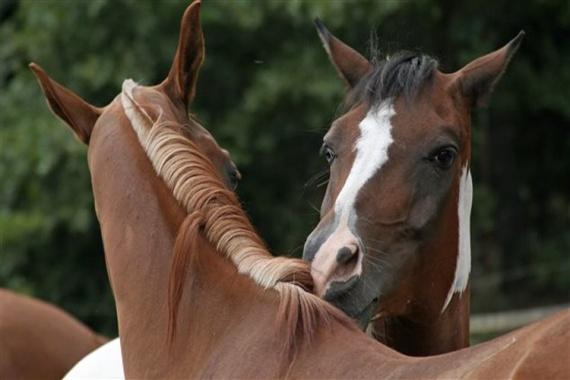
Further care
After a successful pregnancy, mares need special attention and care. These animals are at risk of abortion. The main reason for termination of pregnancy is an outbreak of an infectious disease. Horse owners are afraid of such dangers as rhinopneumonia, flu or paratyphoid.
In order to avoid danger, the horses are given preventive vaccinations. In addition, it is necessary to keep the horses clean. Poor quality feed is a great danger. Poisoning can easily cause abrupt termination of pregnancy.
Watering horses with cold water is fatal. Often the trouble happens in winter. At this time of the year, the temperature of drinking water should not fall below 8 degrees. Mares are carefully protected from injury and falls. In preparation for childbirth, the horses' apartments are thoroughly cleaned and covered with an impressive layer of fresh straw. At the moment of approaching birth, the amount of food for the animal is reduced.

Useful Tips
Crossbreeding horse breeds is not an easy task that requires deep knowledge and skill. Experienced breeders advise:
- It is advisable to mate animals in the early morning. This is due to the fact that the process of ovulation in mares occurs at night.
- It is not recommended to allow mares at the age of 1.5 years to mate. This threatens the young animal with a delay in development and growth. The offspring obtained from such a mare loses to foals born from full-age parents. Restrictions also apply to young stallions.
In order to avoid unwanted contact, it is better to isolate young mares and stallions from each other.
How hybrid horse species are used today
In the 21st century, mankind does not feel the need to use horses as public transport.In developed countries, hybrid types of horses are involved in circus performances, sports and recreational horseback riding.
Representatives of a hybrid horse species - mules - participated in cloning experiments. In some areas, animals are used as a source of meat and milk. For residents of remote corners of the planet, horses and mules are faithful helpers in the household.
